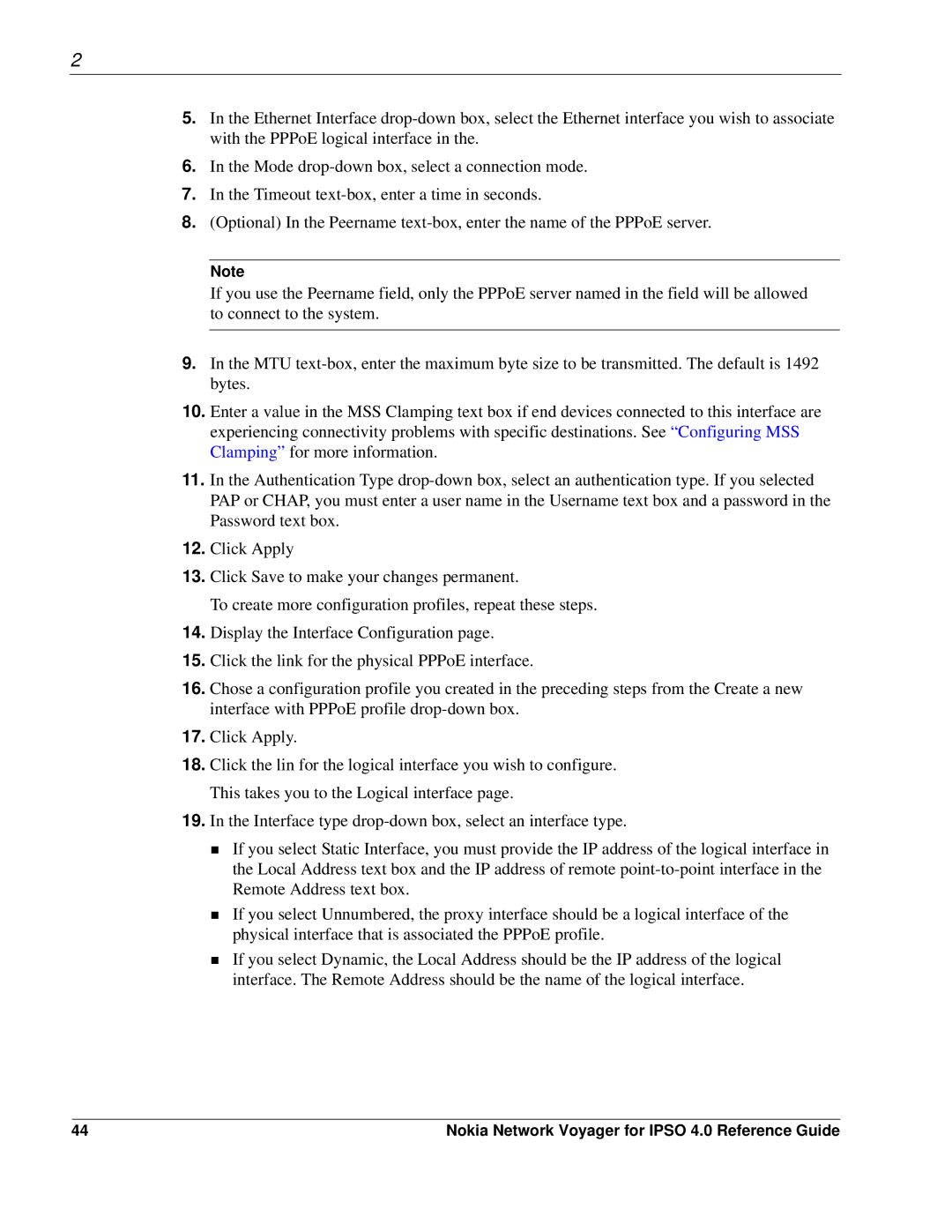
2
5.In the Ethernet Interface
6.In the Mode
7.In the Timeout
8.(Optional) In the Peername
Note
If you use the Peername field, only the PPPoE server named in the field will be allowed to connect to the system.
9.In the MTU
10.Enter a value in the MSS Clamping text box if end devices connected to this interface are experiencing connectivity problems with specific destinations. See “Configuring MSS Clamping” for more information.
11.In the Authentication Type
12.Click Apply
13.Click Save to make your changes permanent.
To create more configuration profiles, repeat these steps.
14.Display the Interface Configuration page.
15.Click the link for the physical PPPoE interface.
16.Chose a configuration profile you created in the preceding steps from the Create a new interface with PPPoE profile
17.Click Apply.
18.Click the lin for the logical interface you wish to configure. This takes you to the Logical interface page.
19.In the Interface type
If you select Static Interface, you must provide the IP address of the logical interface in the Local Address text box and the IP address of remote
If you select Unnumbered, the proxy interface should be a logical interface of the physical interface that is associated the PPPoE profile.
If you select Dynamic, the Local Address should be the IP address of the logical interface. The Remote Address should be the name of the logical interface.
44 | Nokia Network Voyager for IPSO 4.0 Reference Guide |
